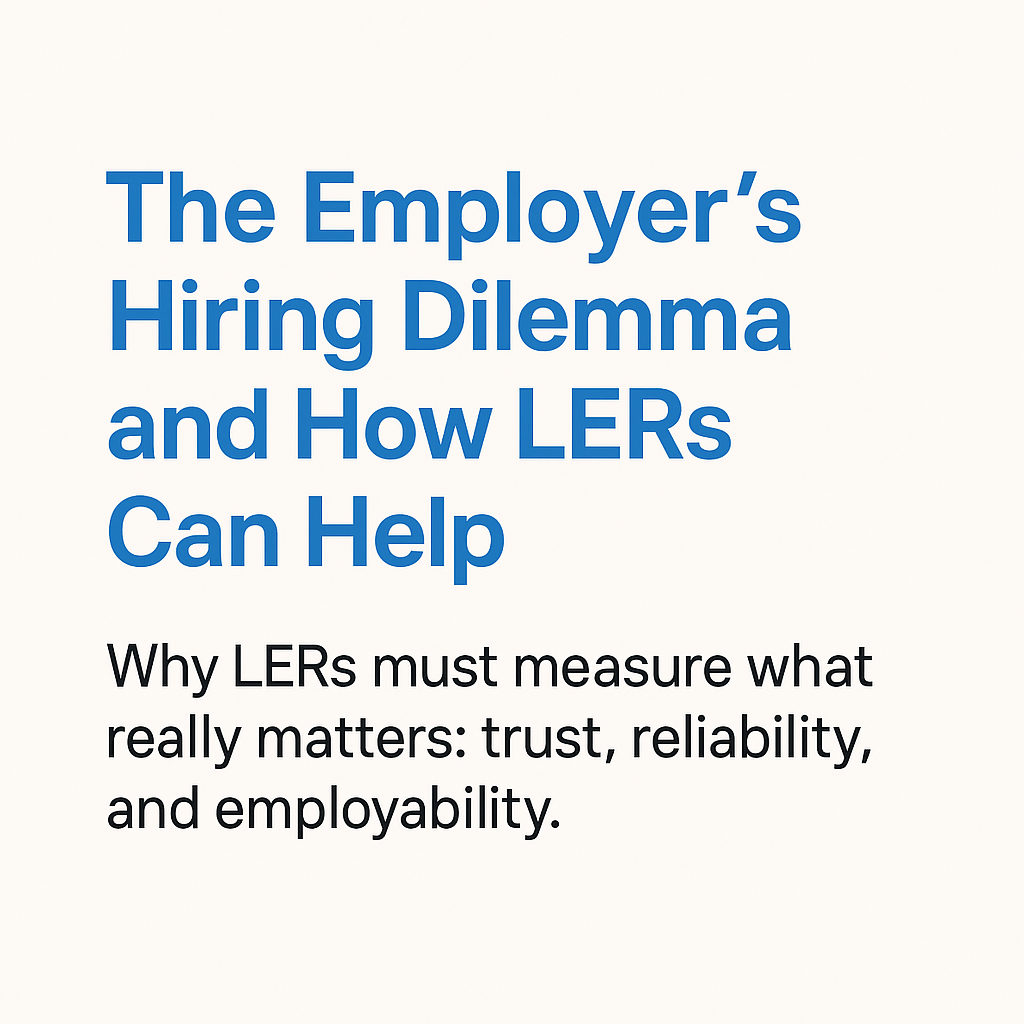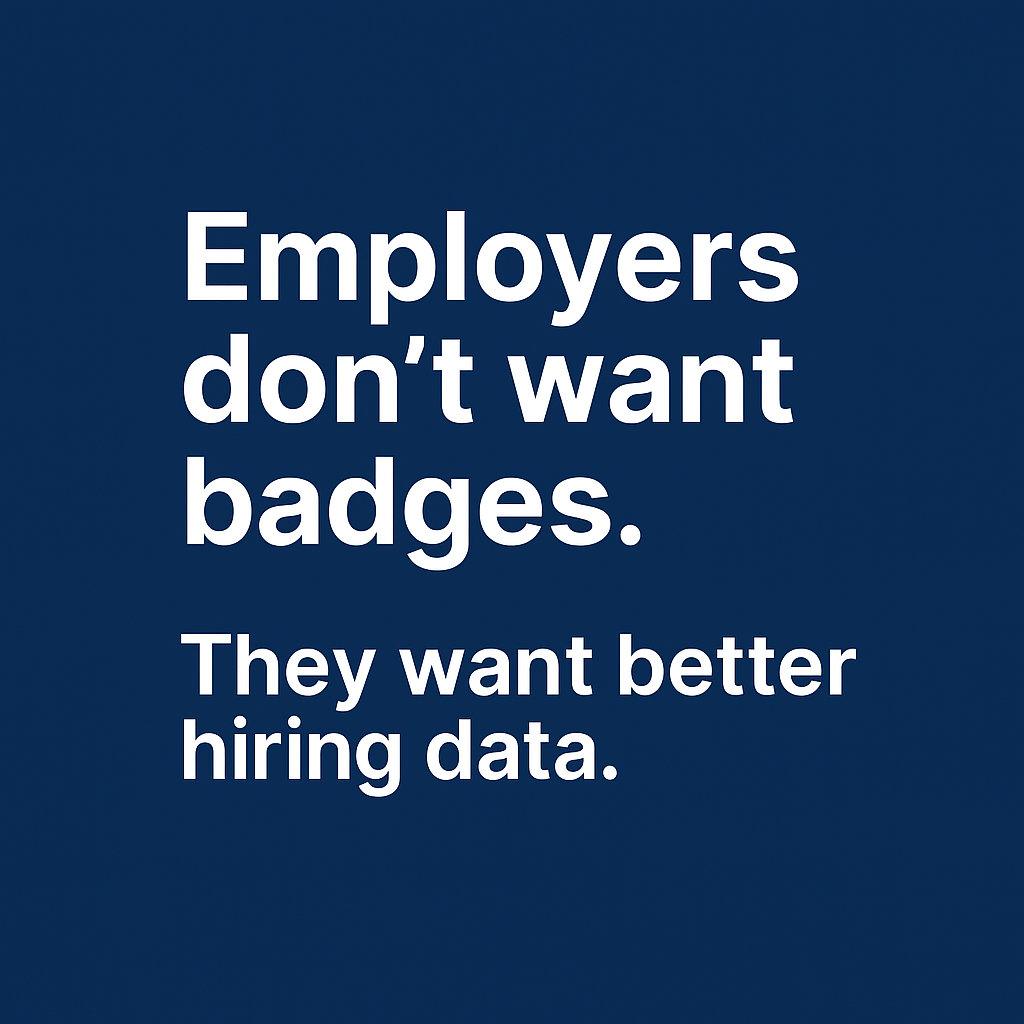From AI to Hired: Transforming Modern Hiring Practices
Dr. Megan Workmon Larsen is the Director of Learning Experience Design at ASU Enterprise Technology, where the experience design team enhances teaching and learning through enterprise-wide technologies at scale. Each year, Megan’s team hires around 50 students to work in the ASU Tech Hubs, on-campus device and educational technology support services for the entire ASU community. These hubs are staffed by exceptional student workers from diverse academic disciplines, emphasizing that technology is not a destination but a journey. Recognizing that technological barriers can significantly impact educational experiences, the importance of customized and personal support becomes clear in achieving better outcomes and fostering stronger connections. The Tech Devils provide essential services to ensure education and technology are accessible and supported throughout the community’s time at ASU, consulting with students, staff, and faculty to help everyone explore how technology can best support their unique efforts.
When recruiting this past year, the Tech Hubs saw a massive increase in applications as well as the use of Generative AI in how students were approaching the job search and hiring process. In this interview, we explore how students are using AI to create their career materials (resumes, cover letters, and portfolios) and apply for jobs on campus. We also examine the impact on their hiring processes and how these processes are evolving to address the challenges AI presents in assessing candidate qualifications.
Ian Davidson is the Chief Growth Officer of iDatafy, leading the go-to-market strategy for SmartResume, the company’s flagship product. SmartResume leverages verifiable credentials as resume content to help students market their skills and qualifications to employers in a trusted manner.
Ian: When did you start to realize that students were using AI to apply for the jobs you promoted to your student body?
Megan: In 2023, we received 2,309 applications for around 20 open positions at our Tech Hubs - a 300% increase in applications compared to 2022. As we reviewed the cover letters and resumes, we immediately noticed a remarkable similarity across materials in comparison to previous years. Many of the skills and keywords in these career materials directly mirrored the job descriptions we posted. Additionally, we saw that some students were applying to every type of job we offered, be it a technical support position or a creative position, with resumes and cover letters nearly identical to each job description each time. It became evident that a large portion of students were using AI tools to generate, refine, and curate their career materials, and we later discovered that some students were even writing scripts to automate the application process, creating custom materials for each application and automatically applying to every open position.
Ian: What do you think led to the rapid adoption of AI in how students applied to your jobs?
Megan: The widespread release of ChatGPT and other generative AI tools has led to some students integrating these tools into daily aspects of their lives. Other students are hesitant, dubious, or not interested in utilizing AI as a tool as well. However, given our place in the university, our applicant pool tends to be highly adaptable to new technologies, so they have naturally extended its use to building content for job applications, preparing for interviews, or asking questions like a thought-partner in reviewing their content. We saw this in play across years, academic disciplines, and various other dimensions when reviewing over 2,000 applications, a wide-spread yet obvious adoption of AI as a tool for job applications. We observed a marked difference in how STEM and humanities majors leveraged AI as a career tool however; STEM majors typically customized their materials to job descriptions using general templates with AI, whereas humanities and arts majors used AI to craft more specific stories, content, and examples, leveraging their communication and creative skills in a notedly different approach.
Ian: Once you realized what was happening, how did your team respond?
Megan: We quickly recognized a new challenge: it was incredibly difficult to assess each applicant’s skills and abilities since their applications mostly echoed the provided job descriptions. Our response was to revamp our hiring processes, focusing more on skills demonstration and creating methods for applicants to showcase their experiences through storytelling, unique perspectives, and future career aspirations. We implemented a rigorous qualification rubric and manually reviewed resumes for clear evidence of claimed skills, looking for badges, credentials, and portfolio items. Additionally, we adapted our interview practices to validate skills and encourage personal voice, asking candidates to discuss their ideas for the future, approach to skill development, and unique examples from their experiences. This was a subtle but significant change in practice.
Ian: That sounds very time-intensive. Did that require more resources? How did that affect your time to hire?
Megan: It was significantly more time-intensive. Normally, two professional staff members would take a week to review applications, prepping questions alongside student staff members for the full interview process. This time, with so many candidates, it took two staff members and six upper division students three weeks to ensure all candidates received a fair review. We usually engage our current student employees in hiring practices so they can gain those experiences on the other side of the table, but this time we spent more time training current student employees on how to review materials, looking for demonstrations of skills or experiences specific to each job. They asked a ton of great questions along the way - How do we make sure we spend enough time with each applicant’s materials? What are the core skills for each position and how do we map those back from traditional career materials? How do we know what is trusted on the resume and cover letter materials given most of it was very obviously generated by AI? How do we hire in a way that helps students develop new skills and competencies over time? I’ve hired staff and students in higher education for 17 years, and I’ve never encountered anything like this massive candidate pool. It was wild!
Ian: What were the biggest factors driving the significant increase in time to hire and resources required to ensure fair treatment of applicants?
Megan: The risk of overlooking qualified applicants was high because we were challenged in the basic career materials to discern experiences, skills, or their desired future career development from AI-generated applications. The use of AI homogenized and flattened applications overall, making it difficult to identify candidates whose skill sets truly matched the job requirements. Direct human interviews became essential to understand applicants’ abilities, but this was very time-consuming. We also noticed that cover letters lost their uniqueness and personal details, which are critical for assessing the diversity of experiences and individuality of candidates. Even as AI elevated the materials overall, we wanted to hear from each person’s unique voice.
Ian: Do you think this is happening everywhere? What should employers prepare for?
Megan: I believe our situation was a perfect storm of timing, new tools, and the desire for on-campus employment. These Tech Hub roles appeal to students who study technology or work in creative disciplines, as a group they are highly curious and intrigued by new and emerging technologies. That said, the flood of similar applications we received might soon be a common experience for other employers. As students grow with generative AI as a commonplace tool, leveraging it for job applications comes naturally to them. While our experience might be slightly ahead of the curve, I anticipate these challenges will become widespread for hiring managers and employers. My greatest hope though is that generative AI becomes a tool that supports students telling their stories in creative ways, taking out some of the anxieties of job searching or helping them think critically about their own path.
Ian: How will your hiring practices change? How will the ways you support learners change? How do you see this all playing out?
Megan: Within Learning Experience Design, our vision is to champion transformative educational journeys by blending innovative technologies with inclusive strategies to foster curiosity, growth, and community. Moving forward, we will continue to adapt our hiring practices to ensure they are fair, inclusive, and effective, piloting new technologies along the way but always focusing on people first. We are really invested in teaching how new tools like generative AI can be leveraged to produce both relevant materials but also an accompanying reflective narrative on how AI supported the process, in job applications, in academic work, in building out creative pieces. How can we help our students and learners understand the job application process, use AI responsibly and effectively especially without losing themselves along the way, and reflect on how the tools best serve them in their transition to the working world post-college?
In partnership with SmartResume and the SkillsFWD grant, we are advancing initiatives to enhance skills-based hiring practices at ASU. This collaboration aims to create a scalable, skills- and experience-based job marketplace, integrating Learning and Employment Records (LERs) to bridge the gap between education and meaningful employment, reducing hiring barriers, and exemplifying a more equitable hiring ecosystem. We want to explore how as a university and hiring department we can consume our own badges and credentials as well as support student skill-development throughout their on-campus employment opportunities. It’s a first, innovative step in the direction of how students can tell their stories, share their experiences, and find their fits for a specific role, job, or future career.
Personally, I love working with generative AI and see its great potential for use in the academic and career spaces. But, I see it as less of a villain, even with 2,309 cover letters to review on a short deadline, and more as a tool that aids in learning. However, this new tool acts as a foil, requiring our hiring practices to adapt and change. My hope is that AI literacy can become an integral part of the career readiness and application process, with an additional focus on how we can use digital credentials and skills-based hiring practices to signal in multiple directions. More importantly, my hope is these combinations of technologies help students tell their stories and give employers a greater ability to listen.
For more information about ASU’s perspective on digital credentialing and AI please visit:
https://tln.asu.edu/blog/how-verifiable-credentials-become-even-more-meaningful-world-ai










